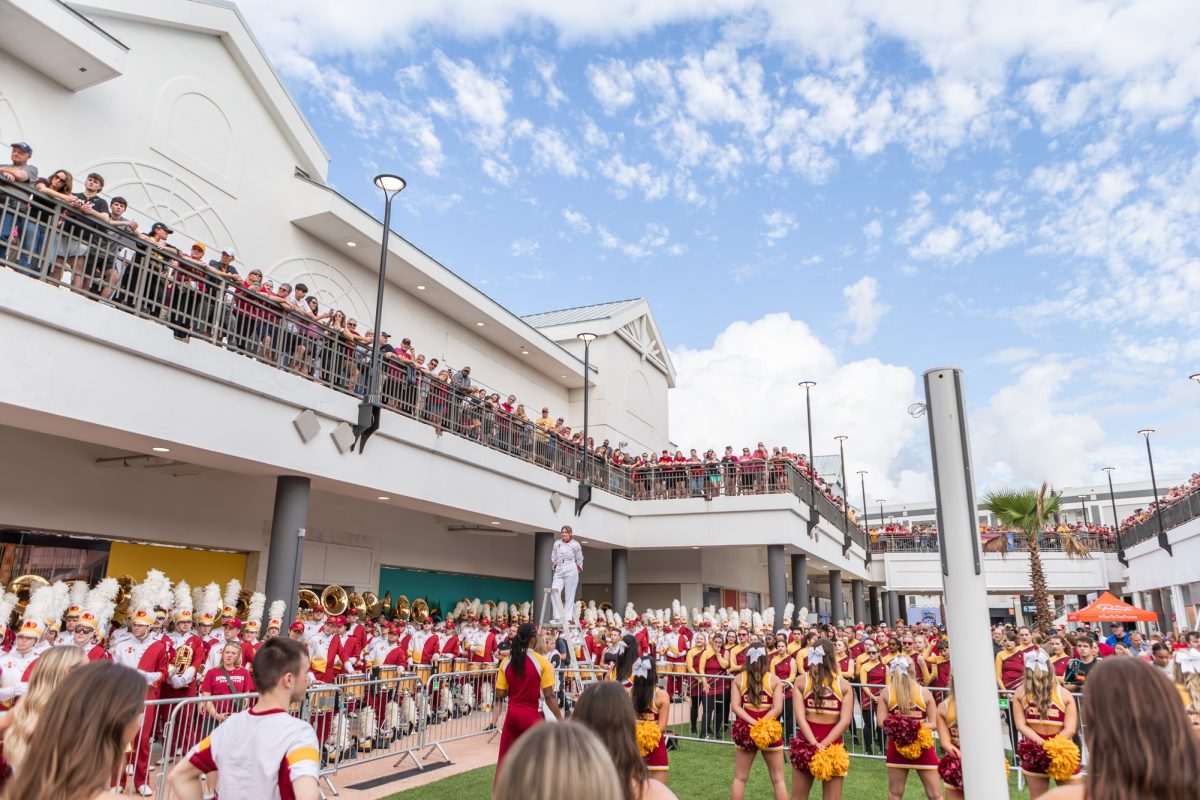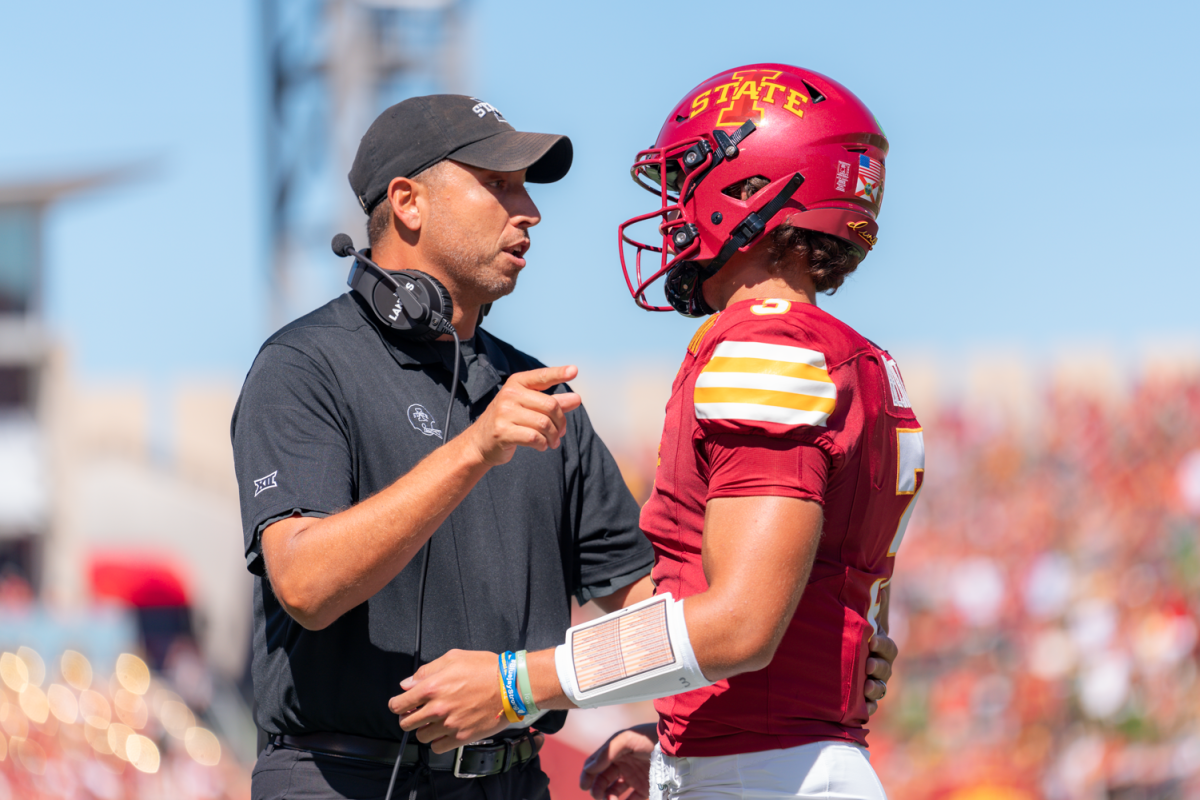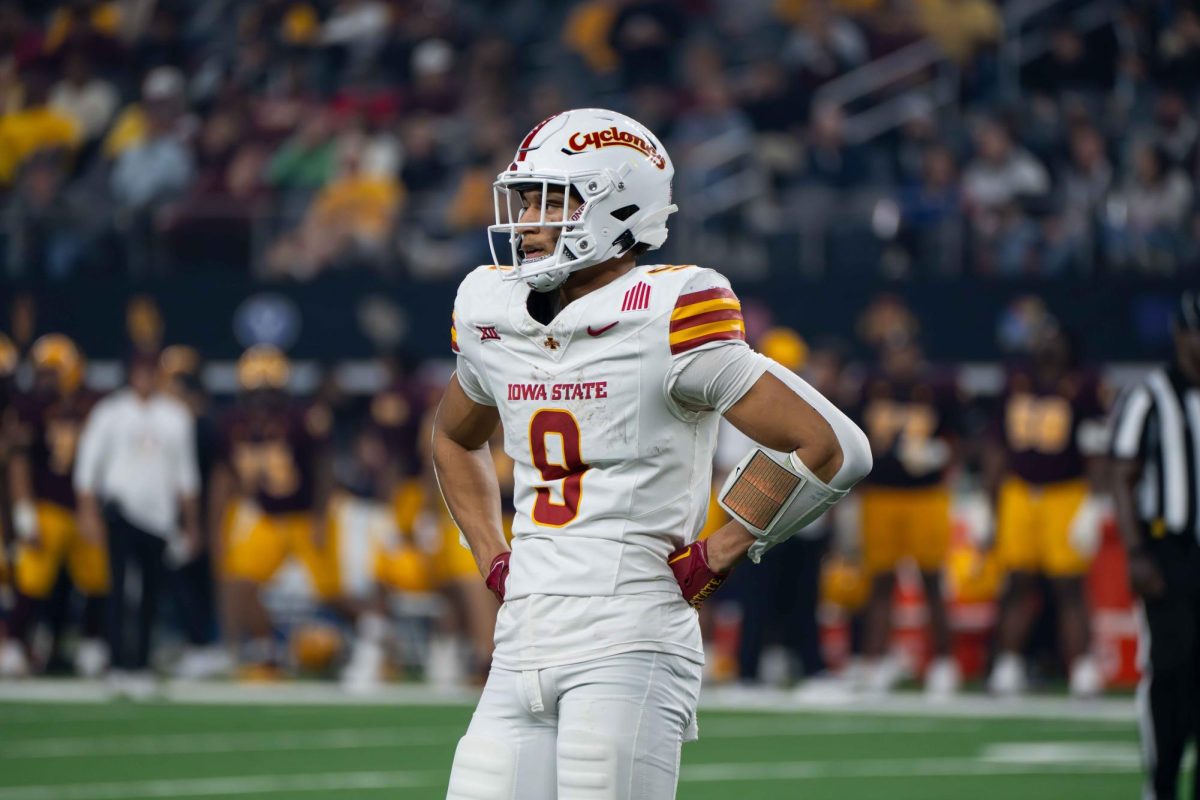Challenges are two-fold for racial minority LGBT students
December 4, 2003
Living on a campus where only 7.6 percent of students are of a racial minority can be tough for minority students. It can also be tough to be a lesbian, bisexual, transgender or asexual student on a campus where LGBT students are not in the majority, and sometimes not even an accepted minority. But for students who are both, a new set of challenges arise.
LaTia McPherson, junior in psychology, said it is difficult to be a part of two oppressed groups when neither fully recognizes her identity.
“It’s rare that you can fight for both causes when you are on an all-white campus such as this,” McPherson said. “It’s hard to be a part of both groups. Like, today am I going to be black or a lesbian?”
Even though the homosexual community is diverse, there is still a perception that LGBT students who are also a racial minority do not exist, especially in smaller communities like Ames, said Victor Raymond, graduate student in sociology.
“It’s the problem I sometimes refer to as ‘only one oppression per customer,'” said Raymond, who is an American Indian and bisexual.
Another reason for the lack of recognition of LGBT racial minorities is often people do not see being gay and being a member of a minority group as the same struggle, McPherson said.
“I think in that same aspect they are parallel and it’s hard to be a double minority,” McPherson said. “A lot of these issues are the same as if it were only a race issue.”
Jeremy Hayes, coordinator of the Lesbian, Gay, Bisexual and Transgender Student Services, said because of racism in the homosexual community, LGBT people of color often concentrate on the issues surrounding their racial or ethnic identity, rather than the homosexual issues.
“For some people I think it’s easy for their race to become the more salient issue,” said Hayes, graduate student in educational leadership and policy studies. “If they’re in a situation where they feel torn and have to pick one over the other, they have a tendency to connect with their racial identity.”
This is because it is more difficult, or sometimes impossible, to hide racial or ethnic identity, Hayes said. LGBT people can pass their sexual orientation or gender identity as heterosexual if they choose, he added.
“[Race is] also something they’ve spent more time with,” Hayes said. “They’ve always been a person of color.”
In addition to racism in the homosexual community, LGBT racial minorities may face homophobia and heterosexism within their individual minority groups.
Raymond said there is resistance to homosexuals in the American Indian community. Due to the “Christianization” of the American Indian community, many are brought up with conservative attitudes about sexuality, Raymond said.
J. Herman Blake, a professor of educational leadership and policy studies and director of the African American studies program said, in general the black community is not accepting of homosexuality.
“I still run into homophobia in the African-American community,” Blake said. “In a variety of ways I have become aware of considerable levels of homophobia.”
Another problem facing LGBT racial minorities is tokenism, since they are often called upon to represent every LGBT person of color.
Raymond said he is often expected to represent the opinion of all American Indians or the viewpoint of all bisexuals. In groups of only LGBT people or of only people of color, he said he often has to give “the GLBT person of color’s perspective” since he is usually the only one.
“My phone rings probably more often than if I was not a person of color,” he said.
Hayes said he has noticed the trend in the homosexual community has been to recognize diversity.
“There’s been a focus on all the different ‘isms’ within the community,” he said. “It’s been very intentional, at least [on a national level].”
Hayes said LGBT racial minorities are the most difficult population for his office to find, reach and provide support to.
“It’s been a population that’s hard to connect with,” Hayes said. “The first step is just going to be sending some signals that LGBT people of color will be accepted.”
Acceptance of LGBT racial minorities on campus seems to be occurring, although slowly.
A challenge with the LGBTAA has always been to find a way to support everyone in the organization without creating separation between groups. Hayes said the formation of subgroups within the Alliance, such as the LGBT People of Color subgroup, was an “intentional” way to combat the lack of diversity.
“It’s pretty much impossible for one large group to serve an entire diverse population,” Hayes said.
Hayes said discrimination against LGBT people of color is not noticeable on campus. However, he added there is a general feeling of discomfort by both the homosexual community and members of minority communities.
He said the LGBT community needs to intentionally address the issue of racism before connections will be made between the homosexual community and racial minorities.
“I don’t think there are the overt, intentional acts of behavior against LGBT students of color,” Hayes said. “Unfortunately, the burden is on LGBT students of color to create [awareness of their situation].”
There is, however, a positive trend of inclusion of homosexuals within the black community, Blake said.
“I sense a general acceptance of gays and lesbians by the African-American community at Iowa State, but I’d be less than honest if I didn’t say there are people who didn’t agree,” Blake said. “It is clear in some settings there are some students who are not welcome because they are gay.”
McPherson said she would like to see the black community come together more often with the LGBT community in events such as the joint rally held on campus in October to kick off both Black Love Week and Coming Out Days.
“That was the first time the two [organizations] had ever come together and they’re both under-represented groups,” McPherson said.
“When it comes time to bridge gaps, I don’t know how well that will work.”
Raymond said one of the biggest challenges to the acceptance of LGBT racial minority students at Iowa State is the perception there are none.
Since many LGBT racial minorities tend to live in larger urban areas, there is a belief there are no LGBT racial minorities at Iowa State, he said.
“I think one of the problems I’ve encountered since I’ve come to ISU is this perception that GLBT people are only found in Iowa City,” Raymond said. “You’re obviously supposed to be two hours down I-80.”
Raymond said there is also a perception there is no racism or homophobia in Iowa or at Iowa State since LGBT racial minorities are not highly visible.
“It’s a cherished myth that Iowa is this wholesome, conservative, happily-behind-the-times place,” Raymond said.
Raymond said although racism and homophobia are recognized as problems, there are still many positive things happening on campus for LGBT people of color.
“The university really is on the cutting edge of change for the better,” Raymond.
“ISU is a good school but it is also a place where if you are a GLBT person of color, you have to make your own way. It is unlikely there is a lot that will have been done before, and what has is cherished.”






